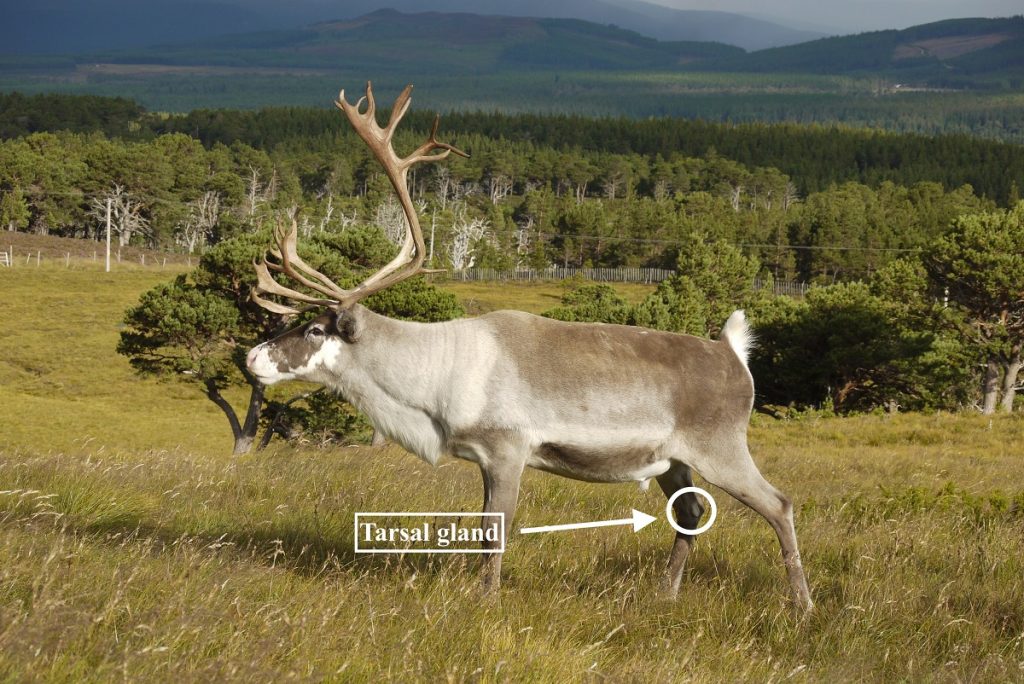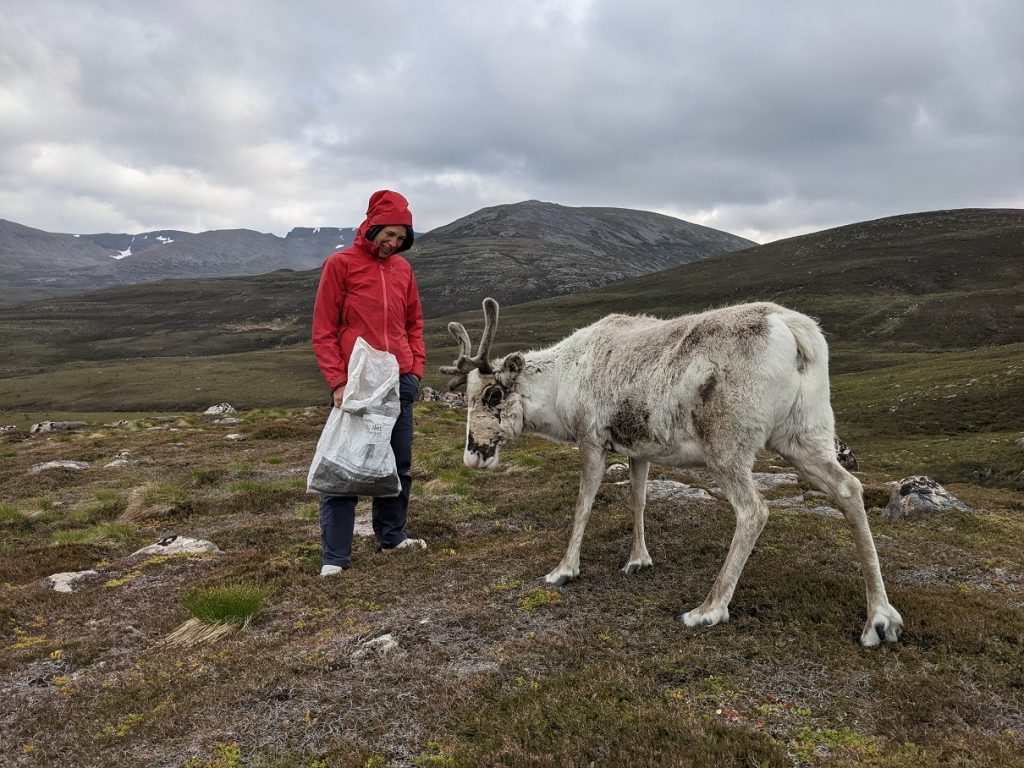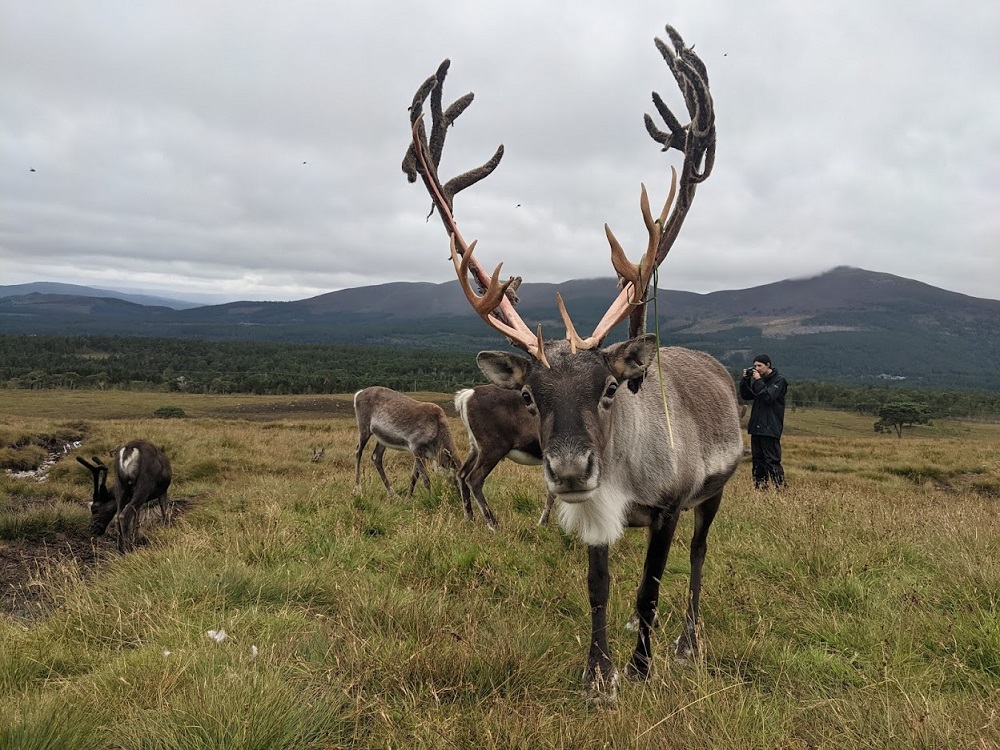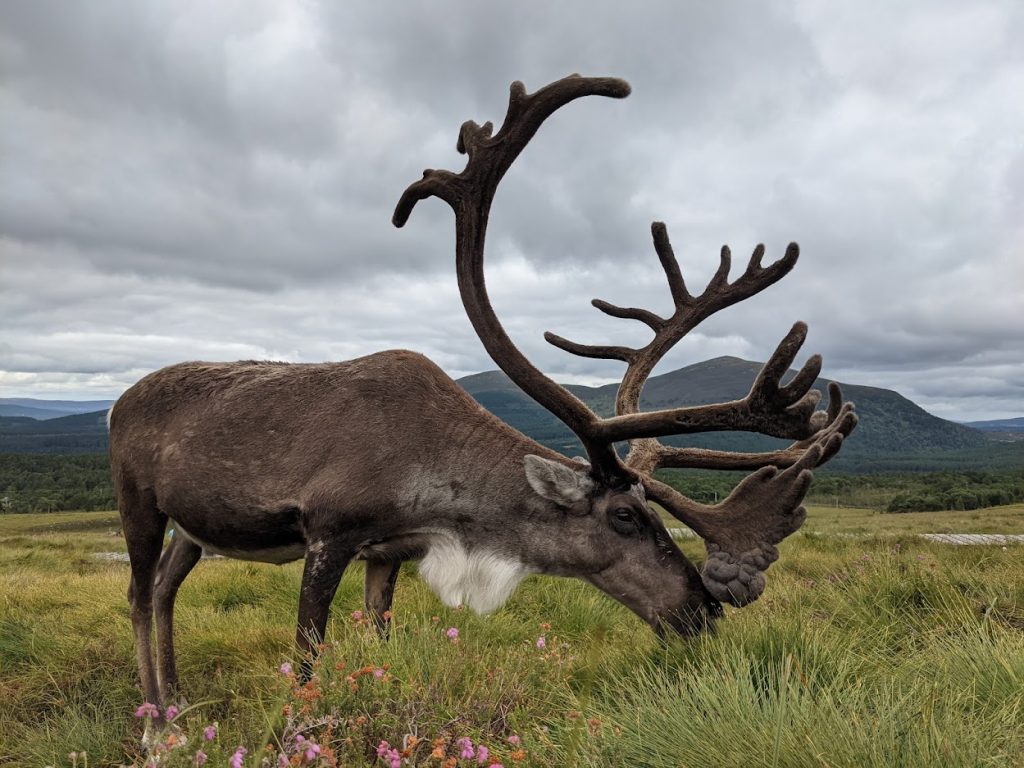
By the time you read this, the rut will be underway here at Cairngorm, with our chosen breeding bulls split with selected unrelated females, to make sure we know who the parents of each calf are. While the bulls tend to be fairly relaxed and laid back for most of the year, as September comes to an end and the cows come into season, they start to “rut”, strutting around, posturing and rounding up their females, and challenging any other bull they see. Reindeer bulls don’t “roar” like some deer species (including the iconic Scottish red deer stag), instead they grunt. But one of the most noticeable changes for me is their smell.

Now, I don’t claim to have a particularly good sense of smell, but in general reindeer are fairly unsmelly creatures. However, a rutting bull is a different matter, and already, as I write in mid-September, our boys are getting stinky. It’s not an entirely unpleasant smell – very musky and, well, masculine I suppose. One of the main reasons they smell so strong is that they begin deliberately peeing on their hindlegs. This always seemed a bit odd until I did my research and realised that reindeer, like all deer, have scent glands on the inside of their hocks, the tarsal glands. This gland produces an oily secretion, and when the natural bacteria on this area combines with pheromones in the urine, that distinctive scent is produced. Apparently every reindeer has a unique, individual scent, due to their own winning combination of bacteria, though I definitely don’t have a sensitive enough nose to be able to tell!


Why do they feel the urge to be so stinky?? Well, part of it must be as a statement of dominance – when I, as a mere human, can smell a bull from 100 metres away, the other reindeer must be able to smell them from… 800 metres?… a mile?? This must act as a deterrent to a weaker bull, and quite possibly as an attractant to a female in season – they definitely come looking for bulls when they’re ready.

We have a vague theory among us herders that the female herders notice the scent of the rutting bulls more than the male herders do. Quite what that means, I have no idea – perhaps the smell is designed more as an attractant to cows than a deterrent to bulls after all (not that any of us lassies have said that we actually like the smell!). Either that or the men amongst us are less sensitive when it comes to body odour!
Andi



























